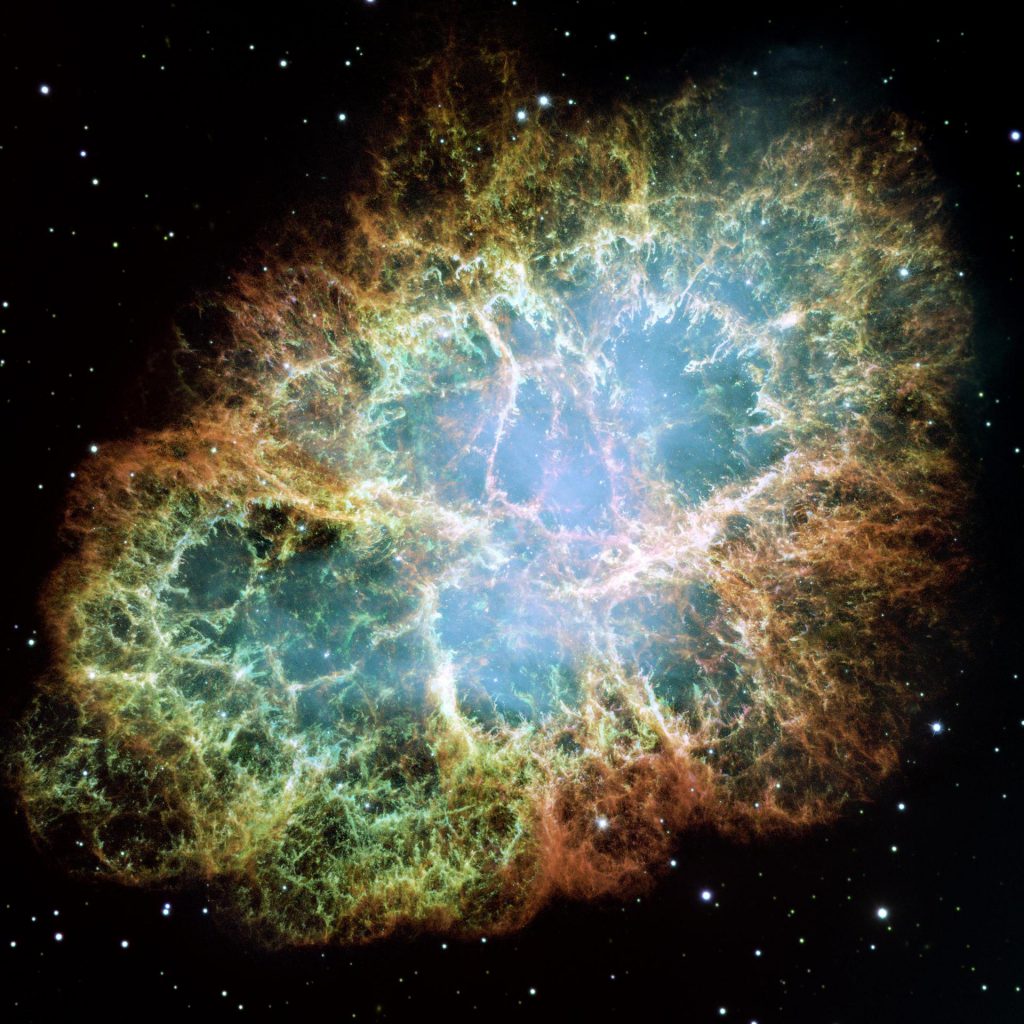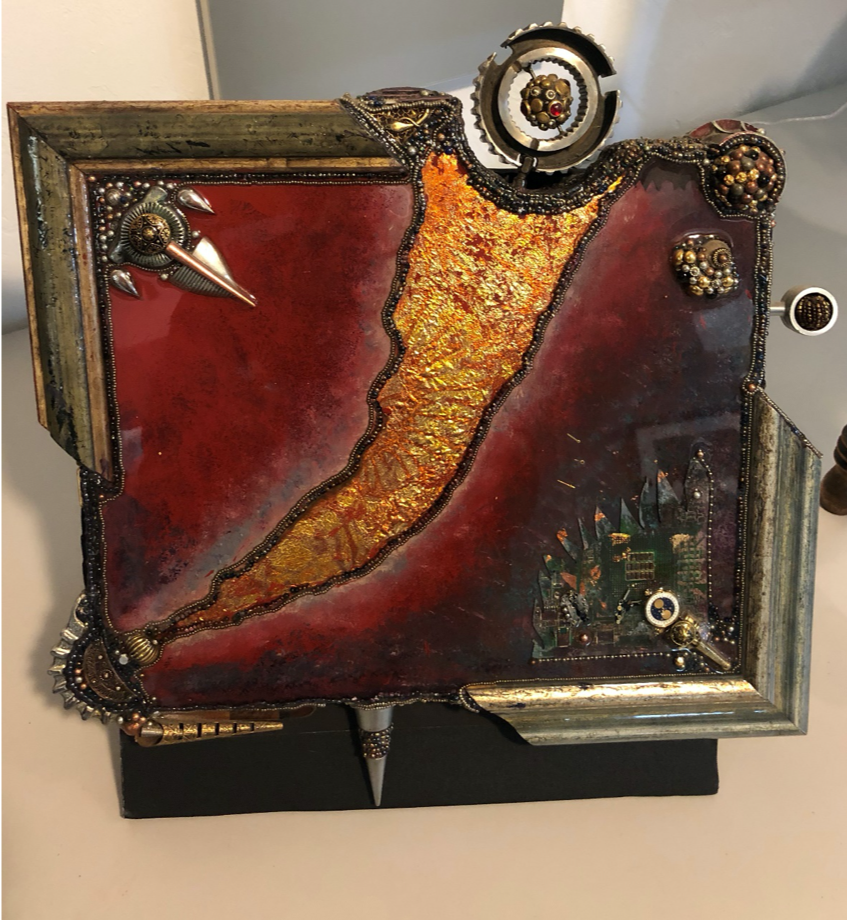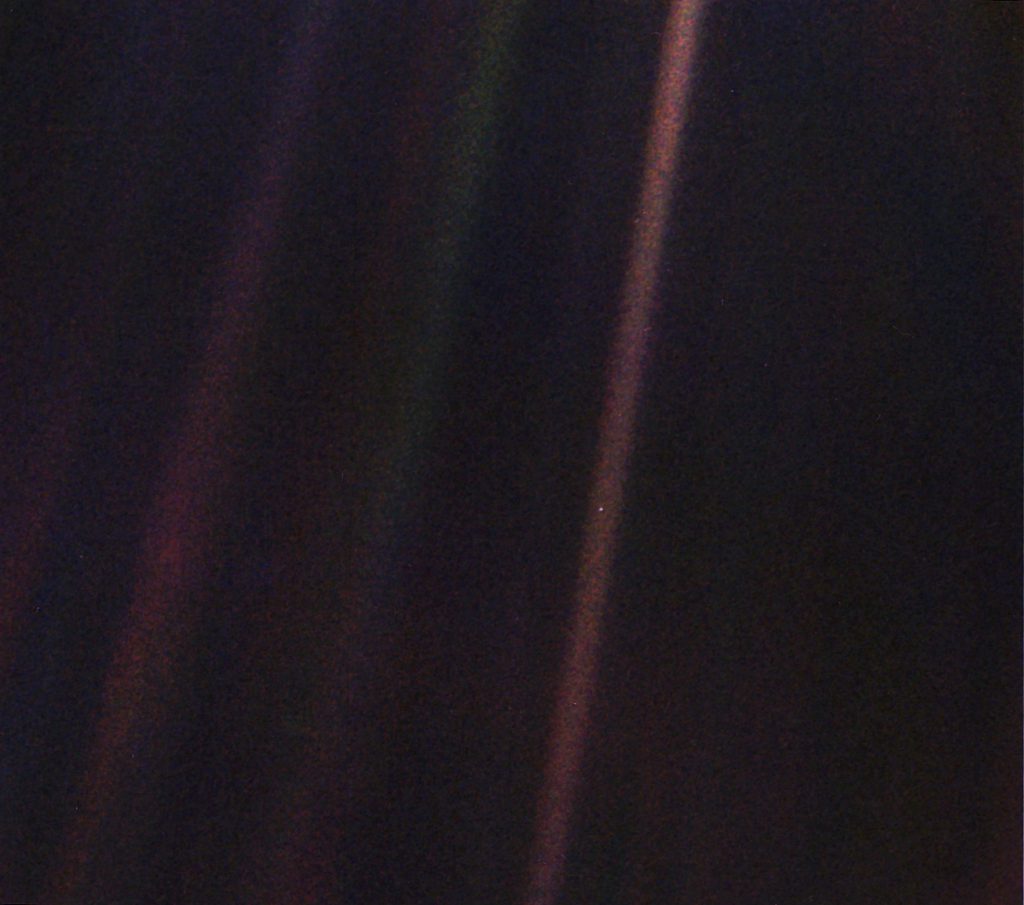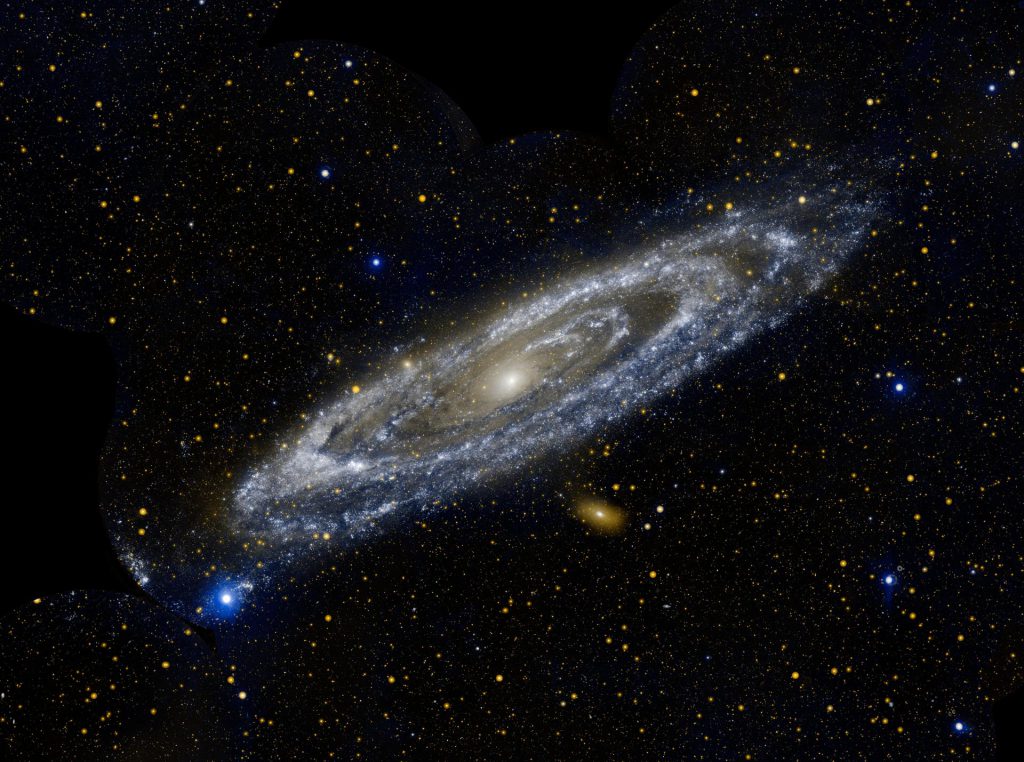One Small Step for Education
Brooke Carruthers is a student at the University of Arizona (UA) and a member of the Kaçar Research Group, headed by BMSIS Scientist Dr. Betül Kaçar. In this guest post, taken from an essay that Carruthers wrote for an advanced course on the foundations of writing at UA, she explores the potential of space sciences education for developing critical thinking and inspiring students.
If you are a student, the guardian of a student, or if you have even glanced at the news, then you have heard about the STEM craze in American education. America’s low scores in standardized science, reading, and math exams compared to international standards have prompted Science, Technology, Engineering, and Math initiatives by insecure American education leaders to boost student test scores in those technical areas. While helpful in some respects, emphasizing STEM courses distracts from the humanities and other artistic disciplines, which could potentially hinder critical thinking ability and limit cultural exposure. Though there exists a push for STEAM, which promotes the Arts alongside the hard sciences, this model lumps the diverse studies of the humanities and social sciences with fine arts and other soft disciplines, while the hard sciences remain distinguished. So, how can we reconcile this segregation to promote a more holistic education that will help students succeed no matter what path they take? Rather than focusing on reorganizing our pre-existing school systems or curriculum, perhaps it is time to look beyond for new inspiration. And I mean far beyond, into the sky and the stars.

Let’s go back for a moment, way back, to your earliest memories of school. Do you remember your first lessons about outer space? About the phases of the Moon, or size of the Sun? If not in your early education, do you remember your first moment of space-inspired wonder, perhaps learning about the unfathomable distances of the universe, or seeing a Hubble image of a vibrant rainbow nebula? That very sense of awe and humility, of amazement and curiosity, is what makes the study of space and space exploration such a powerful educational medium. Not only does it satisfy STEM goals, but it also promotes a sense of exploration in students that can propel them into other disciplines regardless of whether their interests relate to space. This universal quality of exploration presents the intriguing opportunity of a new approach to the American education system, where the interdisciplinary nature of space sciences can promote enhanced communication among various academic disciplines rather than forcing a separation. Because of this interplay, basic space science education should be a top priority in the American education system, as having a nationwide curriculum incorporating space science and exploration education would bolster innovations in academic, artistic, and professional disciplines far beyond, and in conjunction with, the various STEM fields.
Space science automatically employs techniques of the arts with the recoloring techniques required to produce the stunning images many of us use as our laptop and phone backgrounds. But how does space science in turn facilitate artistic creations beyond galactic subjects? The University of Arizona’s Lunar and Planetary Laboratory recently hosted an art exhibit, titled “Art of Planetary Science,” that showcased examples of tangible outcomes from the inspirational power of space sciences, featuring artworks ranging from oil paintings to documentary videos to infinity scarves. All these works derived inspiration from space-related sciences, images, and concepts, but the pieces did not merely reproduce telescope images; rather, the artists created entirely new subjects through various artistic methods. There were experimental types of art, from tactile portraits for the blind to “expressive experimentation” with glitter bits and gold leaf, and pieces that depicted abstract images of concepts such as the future of humanity and the origin of life. Some pieces even promoted social messages, such as images depicting the role of women and immigrants in space exploration in order to celebrate their role in general in our society.

In the above example, titled Good Variables Gone Bad, Dr. Ali Bramson from the UA decided to make her mistaken plots of simulations of subsurface temperatures on Mars into a piece of artwork, illustrating how the space sciences do not restrict thought to data-orientated parameters, but rather encourage an artistic outlook, which could eventually lead to new discoveries simply by analyzing data from a different perspective. Indeed, to fathom the enormity of space, humans often turn to artistic thought to describe spatial phenomena, and this way of thinking is translatable to all academic disciplines and to the obstacles of life, where creative thought helps reveal new perspectives and angles to understanding and solving problems.

In Origins, Bruce Capra took inspiration from the chemical theories of the origin of life to create a visual of “Circular objects in space. The beginning of life,” again demonstrating the visual and imaginative thinking inspired by space concepts and images.

With his Singularity sculpture, Jorge Vergeli depicts the theoretical moment where life merges with artificial intelligence, combining elements of sci-fi imaginings and philosophical questions regarding the future of humanity. These artworks depict different subjects and showcase various artistic techniques, and the diversity of these pieces, despite their similar inspirations from astronomical subjects, highlight the utility and versatility of space sciences in encouraging artistic thought outside the bounds of astronomy and mathematics.
The imaginative thought inspired by outer space images and concepts also stimulates our human instinct for storytelling, as evidenced by the multitude of sci-fi content in our pop culture. The medium of “sci-fi” allows us to explore societal and daily life issues in a setting separated from our reality so that we can analyze the situations and human interactions from entirely different angles. While we must look upward and outward to study space itself, the process of doing so forces us to look inward at our personal perspectives with a renewed understanding of the world beyond. Thus, space education serves a special purpose by leading students to realize their place among a bigger whole, and this realization in turn sparks philosophical commentary about the human condition. Dr. Andrew Fraknoi, an award-winning astronomy educator and researcher, points out that in early educational curriculums, “like Latin and Greek, astronomy was supposed to be good training for student thinking, whether students needed it later in life or not,” but that “this approach soon began to unravel as the schools became less elite and more practical, and colleges demanded more practical knowledge from high school graduates” (Fraknoi 408). Indeed, the mindset required for space exploration activities forces students and scientists to problem solve in creative ways under time constraints, which is a skill applicable to all careers and obstacles of life, from sales positions to business management to home ownership. Yet, our educational system currently revolves around test score statistics rather than critical thinking successes. Thus, implementing space science in public education could help re-focus educational efforts to teach critical thinking rather than teaching to a test.
In addition to inspiring creative and critical thought, a newly defined field called astrosociology epitomizes the convergence between space and the humanities and social sciences. Astrosociology, as explained by Dr. Jim Pass, professor of sociology and pioneer of this new discipline, “focuses on the social science perspective needed to make [space exploration] possible rather than the practical aspects of doing so” (Pass 879). While astrosociology currently channels its focus on the aspects of human interaction specifically concerning the progression of space exploration, putting the various social sciences into context via space sciences helps elevate their importance to general human endeavors. Societal innovation is not all about the next best technology or groundbreaking scientific discoveries; we must also consider human interactions and histories to make significant and lasting innovations possible. Dr. Pass also states how such an integrated “field can bring together all of the relevant information that we presently tend to dismiss as either unimportant or irrelevant,” which reveals another important aspect of space sciences, since they force cooperation between various disciplines so that seemingly unconnected details suddenly matter together amidst a bigger picture (Pass 886).
While many celebrate space exploration as fun and exciting, some readers may question the value of space science when there are so many problems on Earth in need of fixing first, particularly concerning the environment. Despite fears of space exploration promoting thoughts of ditching Earth for some other planet or diverting funding from environmental science initiatives, space science has progressed in harmony with modern environmentalism. In fact, the environmental movement arose almost concurrently with the Apollo era: the EPA was founded in 1970, only one year after the Moon landing. Not to confuse correlation for causation, but the fact that these two advancements could occur nearly simultaneously proves the capacity for concurrent exploration and conservation. Additionally, Dr. Lisa Ruth Rand, a historian of science, technology, and the environment who is currently the American Historical Association and NASA fellow in space history, stated that “Before space exploration began, ‘there was no perception of Earth as a single entity and certainly no context for it in space’” (Bartels). But, after the first images of Earth from space arrived from the first satellites, such as Pale Blue Dot from Voyager 1, suddenly a new perspective of the Earth became available to millions of people, inspiring a sense of humility and wonder unprecedented in human history.

In Pale Blue Dot, the Earth is a tiny pixel within a band of light amidst the vastness of empty space, putting our paradise of life into a shockingly harsh context and thus inspiring actions to protect our vulnerable home. While the global warming debate in the 21st century has caused rollbacks in federal environmental protection pursuits, this decline has coincided with the reduction in federal funding and public interest in space exploration, indicating the inherent connection between space exploration and earthly conservation goals.
So, if the space sciences have brought so much advancement and have the potential to infuse diverse subjects with renewed inspiration, then why has the subject been neglected in modern education, especially given its prevalence only a few decades ago? Dr. Donald E. Pease, professor of English and expert in 19th and 20th century American literature, provides a broad explanation for the lack of space science in modern education by citing the concept of American exceptionalism, explained as “the much-coveted form of nationality that provided U.S. citizens with a representative form of self-recognition across the history of the cold war” (Pease 9). This form of nationality epitomizes the concept of the “American Fantasy,” which comprises of definitions of America as the “‘Nation of Nations’ . . . the ‘Invincible Nation,’” and as a “moral exception,” which gave citizens a set of aspirational beliefs that justified the violent actions of America during the Cold War, since the leading and moral example of America had to protect the rest of the world from communist corruption at whatever cost (Pease 10). A central medium to upholding this American Fantasy by establishing dominance over the Soviet Union was the American space science initiative, namely NASA, and hence the government poured funding into space science endeavors during this era. However, after the fall of the Soviet Union, the American Fantasy started to break down with the lack of a central enemy, and with it the national support of space programs since space science was no longer instrumental in facilitating the facade of the American Fantasy.
Since then, space sciences have taken a back seat to STEM initiatives, which are more in line with the modern concept of America as a “Leading Nation” in 21st century technical innovations. Despite the scare of low test scores, however, Fareed Zakaria from the Washington Post points out that since the first technical skill national exam in 1964, “America has lagged behind its peers . . . And yet over these past five decades, that same laggard country has dominated the world of science, technology, research and innovation,” due to “the sense of creativity and competitive drive embedded in our social structures and our education systems” (Zakaria). Indeed, Zakaria also notes that “William Bennett, the Reagan-era secretary of education . . . quipped, ‘This country is a lot better at teaching self-esteem than it is at teaching math'”. The implementation of space sciences in public education could strengthen America’s position at the helm of world leadership by fostering a sense of confidence and igniting bold curiosity in all career endeavors.
Despite the numerous benefits, the actual implementation of space science in American education will prove more difficult than simply adding a unit to middle school science class. Each state and local district has different curriculum requirements and yearly goals to reach, making a widespread implementation of space science education bureaucratically difficult. Additionally, not all districts are given equal funding, resources, or trained teachers in order to provide a fulfilling education for every child (Kitmacher 2-3). Nevertheless, I uphold that refocusing efforts on space exploration education as a part of basic science education would inspire a greater number of students, including those who do not want to follow a STEM field, because the critical thinking and multiple perspectives involved in the space sciences are more applicable to a broader range of subjects than basic biology or physics. Indeed, space education need not remain bound to math and science. The beauty and the awe-inspiring effect of space alone is enough to inspire wandering thoughts and broaden perspectives, a quality that we sorely need in our current divided world.

Brooke Carruthers can be found on her Instagram with the handle @red.brooke as well as on Facebook. For email inquiries, please send your message to info@bmsis.org and it will be forwarded to the author.
Referenced Works
- Bartels, Meghan. “How Space Exploration Can Teach Us to Preserve All Life on Earth.” Space.com, 13 Sept. 2018, www.space.com/41818-earth-biodiversity-conservation-lessons-from-space.html
- Bramson, Ali. Good Variables Gone Bad. 2019, Kuiper Space Science Building, Tucson.
- Capra, Bruce. Origins. 2019, Kuiper Space Science Building, Tucson.
- The Art of Planetary Science. 15 Nov.-17 Nov. 2019, University of Arizona Kuiper Space Sciences Building, Tucson.
- Fraknoi, Andrew. “Space science education in the United States: The good, the bad, and the ugly.” Societal impact of spaceflight (2007): 407-419.
- Kitmacher, Gary H. Teacher Perceptions of Factors that Affect Teaching Space Science in Texas. Diss. 2013.
- NASA/JPL-Caltech. “Pale Blue Dot.” Voyager 1s Pale Blue Dot | NASA Solar System Exploration, 14 Feb. 1990, solarsystem.nasa.gov/resources/536/voyager-1s-pale-blue-dot/
- Pass, Jim. “Astrosociology and Space Exploration: Taking Advantage of the Other Branch of Science.” AIP Conference Proceedings. Vol. 969. No. 1. AIP, 2008.
- Pease, Donald E. “The United States of Fantasy.” The New American Exceptionalism, University of Minnesota Press, 2009, pp. 3–35.
- Vergeli, Jorge. Singularity. 2019, Kuiper Space Science Building, Tucson.
- Zakaria, Fareed. “Why America’s obsession with STEM education is dangerous.” The Washington Post, 26 March 2015, www.washingtonpost.com/opinions/why-stem-wont-make-us-successful/2015/03/26/5f4604f2-d2a5-11e4-ab77-9646eea6a4c7_story.html
